With the current rate of urbanization and the posterior increase in energy demand energy effective structure has a significant part to play in contributing to energy security in developing countries. Energy consumption patterns can be mainly reduced by energy conserving measures, particularly during the phase of structure design.
Space heating cargo can be reduced by about 50. When economically- feasible separating measures are applied to the structure envelopes i.e.To ceiling and walls.
In conventional Indian structures, energy consumption is 200 kWh per sq. This energy consumption can be reduced to 120kwh perqs cadence by operations of energy-effective structure ways. Energy effectiveness measures for structure are approaches through which the energy consumption of a structure can be reduced while maintaining or perfecting the position of comfort in the structure. They can generally be distributed into:
- Reducing heating demand;
- Reducing cooling demand;
- Reducing the energy requirements for ventilation;
- Reducing energy use for lighting;
- Reducing energy used for heating water
Climate and the need to toast or cool a structure plays a majorpart in the design of the external envelope – transparentrudiments like windows and sunspaces, walls, roofs, and bottoms of a structure. By perfecting the structure, envelope, unresistant solar strategies can bedeveloped to amelioratecomfort and reduceenergydemands.
- Reducing electricity consumption of office equipment and appliances;
- Reducing energy used for heating water;
- Reducing electricity consumption of office equipment and appliances;
- Mechanical ventilation and air conditioning tend to be electrically driven and operational throughout the building’s occupied life, which makes them both expensive to operate and, depending on the combined efficiency of the national power generation plant, a significant source of greenhouse gas emissions.

- Removing them from the building design and replacing them with passive designs will have a significant impact on the life of the building. For instance, it is estimated that air-conditioned office buildings consume approximately 250 kWh/m2 per annum, while naturally ventilated office buildings consume 120 kWh/m2 per annum. Similarly, with daylighting reducing the need for artificial lighting, the life-cycle impact will be substantial.
- In passive solar building design, windows, walls, and floors are made to collect, store, and distribute solar energy in the form of heat in the winter and reject solar heat in the summer. This is called passive solar design or climatic design because, unlike active solar heating systems, it does not involve the use of mechanical and electrical devices.
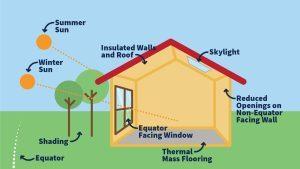
- The key to designing a passive solar building is to best take advantage of the local climate. The elements to be considered include window placement and glazing type, thermal insulation, thermal mass, and shading. Passive solar design techniques can be applied most easily to new buildings, but existing buildings can also be retrofitted.
Energy Conservation Building Code (ECBC)
Building energy codes for new buildings is an important regulatory measure for ushering Energy Efficient Building sector. They are particularly relevant for countries like India where the building stock is rising rapidly.
India has begun the gradual introduction of energy efficiency solutions in the building sector. In 2001, the Indian Government introduced the Energy Conservation Act (Bureau of Energy Efficiency, 2011).

As an outcome of this act, a first-generation building code, the Energy Conservation Building Code (ECBC), came into effect in 2007. Currently, ECBC applies to buildings that have a connected load greater than 100 kW or contract demand greater than 120 kVA (Bureau of Energy Efficiency, 2011). In practice, ECBC requirements are generally only applied to buildings with air-conditioned floor areas of over 1000m2. In principle, the ECBC also applies to large residential complexes, when their connected load or contract demand exceeds the thresholds. The Energy Conservation Act, of 2001 empowers the Government of India to prescribe ECBC in India.
Bureau of Energy Efficiency (BEE) an autonomous body under the Ministry of Power, with support from the United States Agency for International Development (USAID) under its Energy Conservation and Commercialization Project (ECO- II Project) launched the first version of ECBC for its implementation in commercial and office buildings on a voluntary basis.

As the first stand-alone National Building Energy Efficiency code of India, it sets the minimum energy performance requirements of Commercial Buildings and their components.
ECBC has been developed by extensive data collection and analysis of different building types, materials, services, and usage patterns. Different climatic zones in which buildings would be constructed were also taken into account. Base case simulation models were then developed for buildings using this background data in these climatic zones. The code is applicable to five major areas of energy consumption in buildings which are:
- Building Envelope
- Heating, Ventilation and Air Conditioning
- Service Water Heating
- Lighting
- Electric Power and Motors.

The successful implementation of the code requires the development of compliance procedures (compliance forms and development of field-test compliance forms and procedures), in addition to the building capacity of architects/designers/builders/contractors and government officials in States and Urban and Local Bodies (ULBs).
It is also dependent on the availability of materials and equipment that meet or exceed the performance specifications specified in ECBC. The Bureau of Energy Efficiency (BEE) with the support of the USAID ECO- III Project is promoting ECBC awareness and voluntary adoption through training and capacity-building programs, pilot demonstration projects, and identifying steps for compliance checks and monitoring of ECBC.
ECBC User Guide was developed to support ECBC implementation by providing detailed guidance to the users on how to comply with the Code. Four ECBC tip sheets on Energy Simulation, Building Envelope, Lighting Design, and HVAC are also available and provide useful information on Code compliance at the system level and through the Whole Building Performance approach that requires knowledge of energy simulation to model the proposed building.
The ECBC provides design norms for:
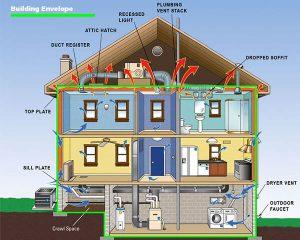
- Building envelope, including thermal performance requirements for walls, roofs, and windows
- Lighting system, including daylighting, and lamps and luminaire performance requirements
- HVAC system, including energy performance of chillers and air distribution systems
- Electrical system
- Water heating and pumping systems, including requirements for solar hot-water systems.
The Benefits involved for ECBC Compliant Buildings are:
- Reduce energy consumption
- Reduce CO2 emissions
- Lower costs through energy savings
- Accelerate deployment of energy-efficient technologies.
- Use of energy efficient equipment.
- Awareness and importance of Energy Conservation.
- Better use of Natural Resources

ECBC-Residential
It is of vital importance for India to develop energy-efficiency strategies focused on the residential sector to limit the current trend of unsustainable escalating energy demand. The production of the residential building stock in urban areas is shifting quickly toward multi-story residential buildings from the earlier model of building individual homes. It is expected that, with the economics of land and the need for cities to be geographically compact, multi-story residential buildings will be the dominant form of meeting the demand for housing in urban areas.
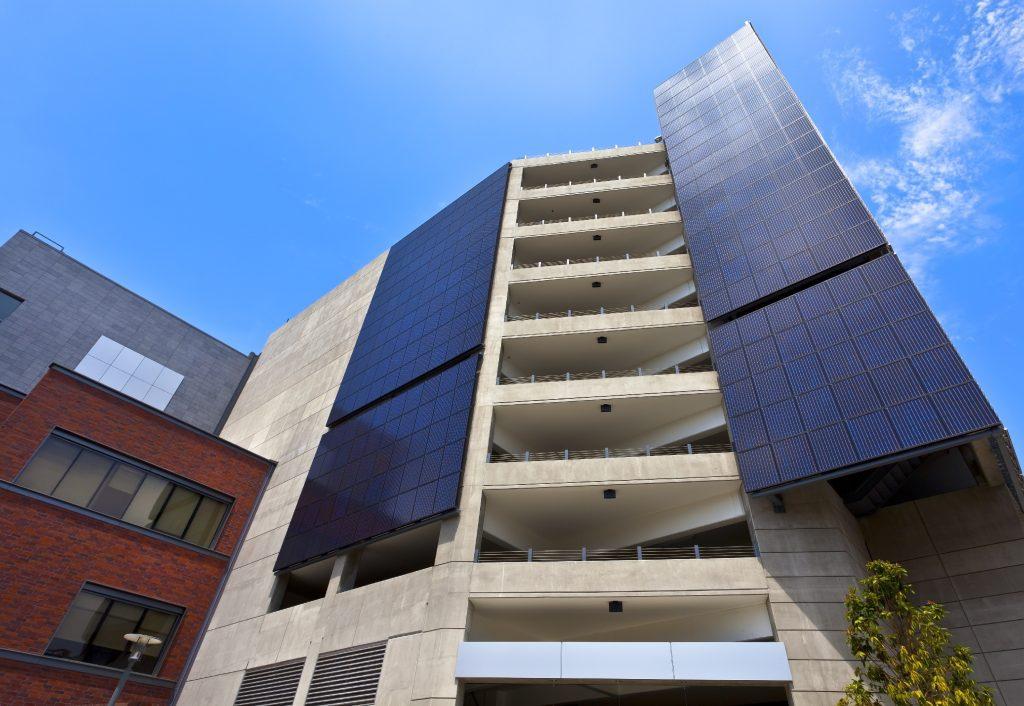
This will be the trend for housing for people across the socio-economic spectrum, from low-income to the middle and high-income categories. The initiation of the Energy Conservation Building Code for Residential Buildings (Part I: Building Envelope Design), addresses this category of residential buildings. The Ministry of Power has announced the ECO Niwas Samhita 2018, which is the Energy Conservation Building Code for residential buildings (ECBC-R). The implementation of this code is expected to boost energy efficiency in the residential sector, its occupants, and the larger environment by promoting energy efficiency in the design and construction of homes, apartments, and townships. Implementation of this code is expected to save 125 billion units of electricity by 2030.
The Part-I (Building Envelope Design) of the ECBC has been launched which prescribes minimum standards for building envelope designs with the purpose of designing energy-efficient residential buildings. Its early and immediate introduction is to improve the construction and design of new residential building stock, as it is being built currently and in the near future, to significantly curtail the anticipated energy demand for comfort cooling in times to come. This critical investment in envelope construction and design made today will reap the benefits of reduced GHG emissions for the lifetime of the buildings.

The code is expected to assist a large number of architects and builders who are involved in the design and construction of new residential complexes in different parts of the country. Implementation of this code will have the potential for energy savings to the tune of 125 billion units of electricity per year by 2030, which is equivalent to about 100 million tons of CO2 emission.
The ECBC-R aims at limiting heat gains/loss from building envelopes and for ensuring adequate natural ventilation and daylighting. To limit the heat gain/loss from the building envelope, the code specifies:
- Maximum value of Residential Envelope Transmittance Value (RETV) for building envelope (except roof) applicable for four climate zones, viz. Composite Climate, Hot-Dry Climate, Warm-humid Climate and Temperate Climate.
- Maximum value of thermal transmittance of building envelope (except roof) for Cold Climate zone (Uenvelope,cold).
- Maximum value of thermal transmittance of roof (Uroof) for all climate zones
To ensure adequate natural ventilation, the code specifies.
- Minimum Openable window-to-floor area ratio (WFRop)
- To ensure adequate day-lighting, the code specifies.
- Minimum Visible Light Transmittance (VLT) for the non-opaque building envelope components
- The code is applicable to all residential use building projects built on plot area = 250 m2. The type of building projects includes, but not limited to:
- Group housing projects: Building unit or units constructed or to be constructed with one or more floors having more than two dwelling units having common service facilities where land is shared and commonly used by the dwelling units, and the construction is undertaken by one agency.
- Mixed Land Use Building projects: With buildings partly used for non-residential uses and partly for residential use.
- Multi-dwelling unit building on residential plots
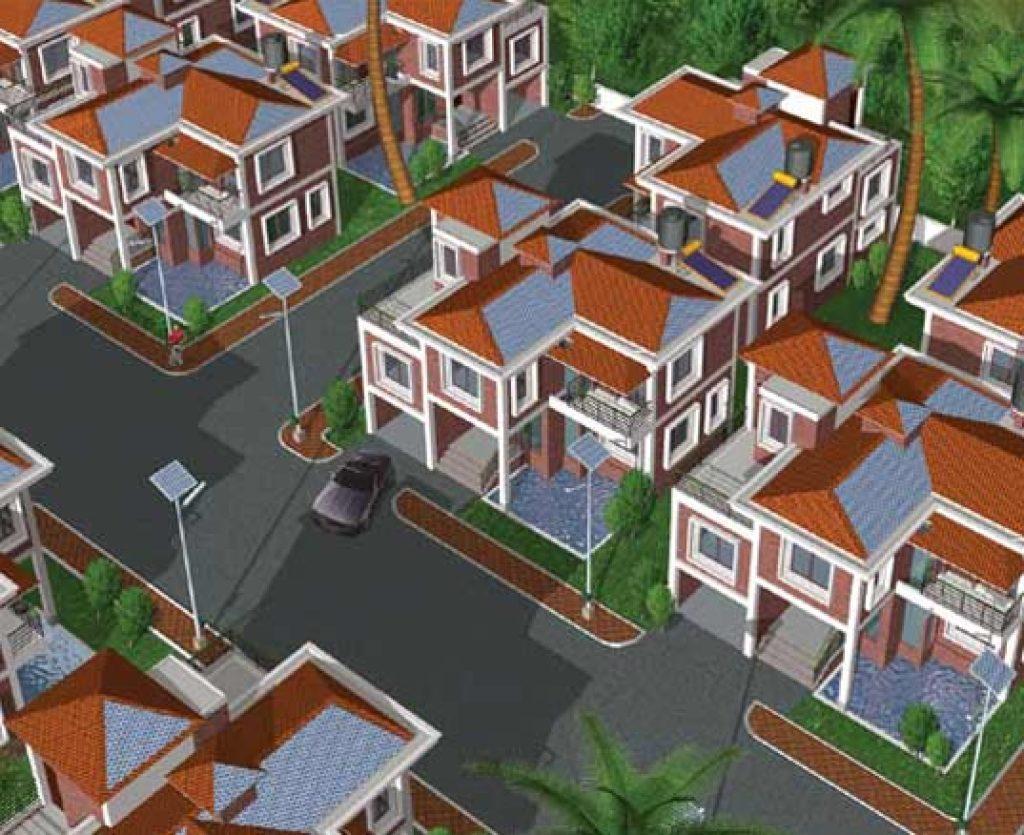
Conclusion
Buildings are responsible for an enormous amount of global energy use, resource consumption and greenhouse gas emissions. Architectural design based on environmental preservation is the only option for maintaining the quality of life and preventing lasting environmental damage. Pollution reduction, waste minimisation and energy conservation can be furthered through environmentally friendly architectural design and construction. There is the vast potential of energy-saving possible through the implementation of ECBC. An urgent need to implement ECBC is required as lots of buildings in the country are yet to come and incorporating ECBC design strategies at the planning stage is economical than applying it to old buildings.
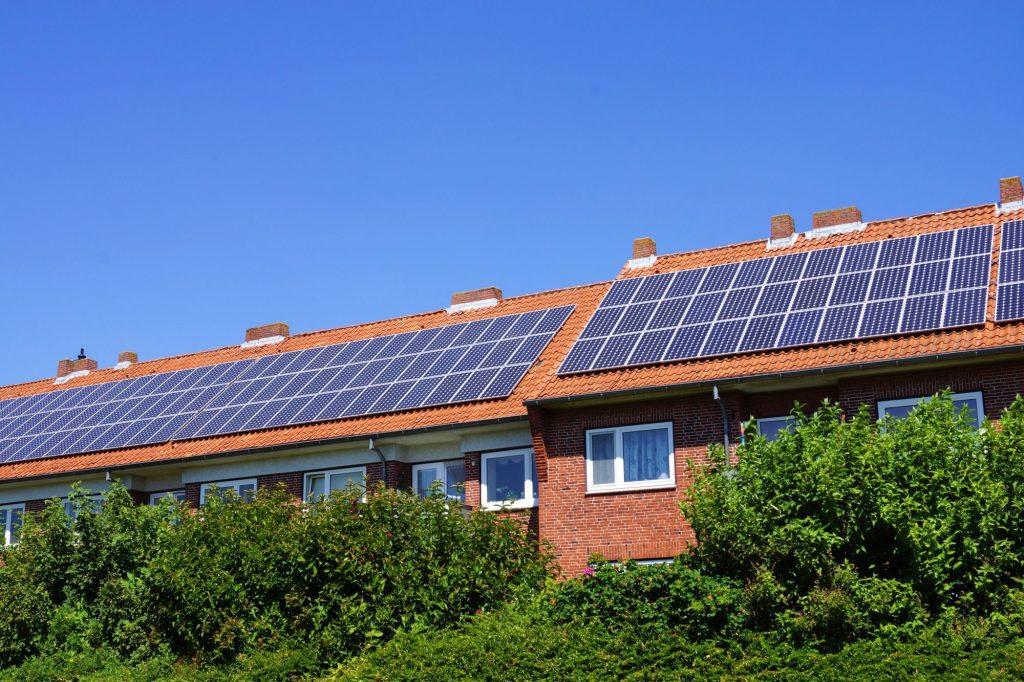
During the development of ECBC, analysis conducted through energy simulation indicated that ECBC-compliant buildings may use 40 to 60% less energy than similar buildings being designed and constructed at that time. The ECBC 2017 prescribes the energy performance standards for new buildings to be constructed in India. It prescribes standards for current as well as future advancements in building technology to further reduce building energy consumption and promote low-carbon growth by setting parameters for builders, designers, and architects to integrating renewable energy sources in building design with the inclusion of passive design strategies.


